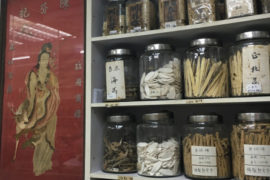Assuming we have great quality teas, how do you ensure that the steeping process enhances and elicits its best qualities? Right technique and understanding, as well as a lot of ‘gongfu’ definitely are requirements. But one often overlooked, but crucial requirement is using the right teawares.
The teapot is so called because it is a pot for tea, which means, function must precede form. That teapot’s ability to steep, pour, and extract the right taste notes from the intended tea, is of utmost importance. For example, a decorative pot that pours slowly, allowing the tea inside to over-steep, makes it unacceptable as a teapot, but only as an attractive object d’art. A teapot’s usefulness is guided by material, creation, and the artisan’s ability to translate the understanding of tea to his pot.
The type of teapot in which you steep the tea plays an important part, including the different types of materials your vessel is made with. One may choose from various kinds of metals, porcelains, earthenware, clay and terracotta. The Chinese have had quite a few hundred years to figure out what materials worked best. Metals are considered most unsuitable, and clays like terracotta are also not preferred. Often, for convenience, many consumers choose a porcelain pot with a metal strainer, which, though functions well for cleaning and straining purposes, are not the preferred method of the true tea aficionado. Likewise, cast iron tetsubins are completely unsuitable, its function mainly for holding hotwater. Of these materials, a kind of clay called Yixing Zisha, or purple sand clay from Yixing is the most highly prized.
Zisha, and its many variations and colors, are notable for their porous qualities that both insulate heat and allow the tea to breathe. At firing, the clay shrinks to a very tight hold, so that no unnecessary steam escapes. When one evaluates a good teapot, one of the requirements is whether the fragrance of the tea has been retained inside or absorbed by the pot; worse, sometimes the fragrance has dissipated due to a substandard clay or other materials. The pour from the spout must be quick, and can not chortle. When pouring from a high position to aerate the tea, the liquid can not splash and form ‘snowflakes’ in the cup. Also, the spout can not dribble or drool down the side. Never mind old English teapots that take a good minute or more to pour because the spout was not designed correctly. A few seconds oversteep and the tea aficionado will lament wasting his top quality oolong. A round belly teapot allows the pearl shape oolongs to churn and rotate freely and unfurl inside the pot. A square teapot, though aesthetically more challenging to make, tends to restrict this movement and so elicit less of what the leaves can offer. A flatter belly teapot is perfect for long twisted leaves like Wuyi or Phoenix teas. The skill of the tea aficionado is important, but choosing the right tea pot to begin with is half the battle!
Once, I used a teapot whose clay was not entirely made of Zisha, and my Wuyi Big Red Robe (Da hong Pao) tea smelled heavily of charred wood fire. When I used a pure Zisha teapot, not only was the fire smell absorbed and eliminated, the sweet cooked butterscotch flavors became pronounced and showcased. Of the best quality pots, different ones will dress the different teas best for its inherent nature. That is the reason why we collect Yixing Zisha teapots!
Once function is established, form follows. Next time, we will discuss clay quality and the inner beauty of true Zisha ware.







Comments are closed.